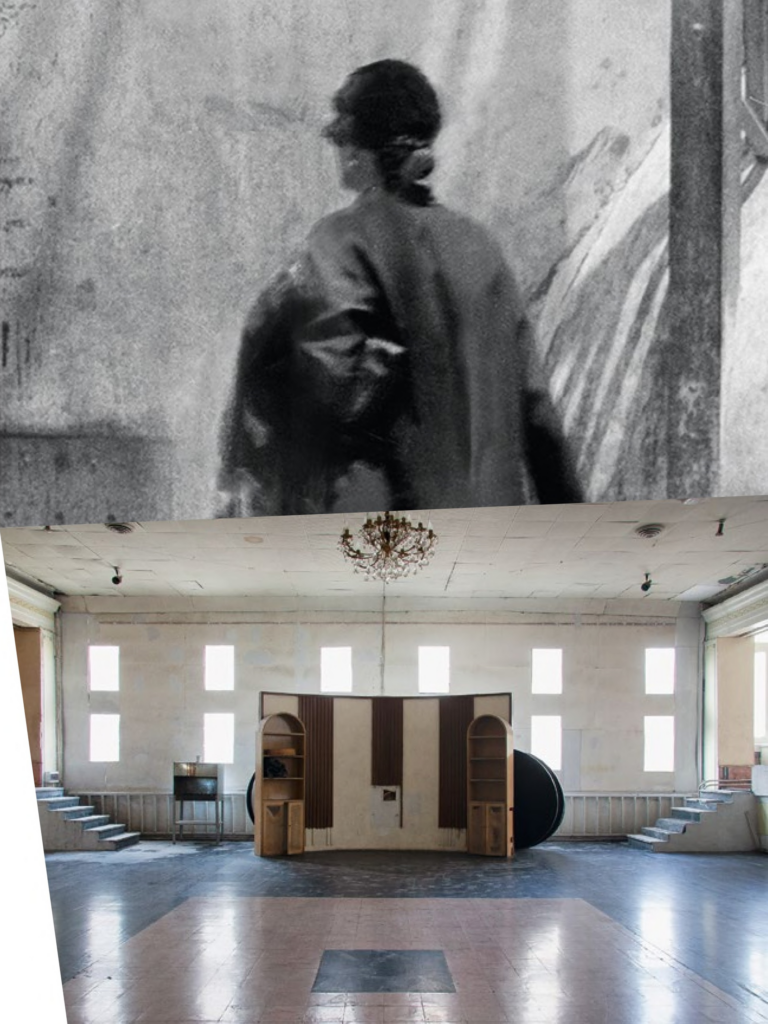INES WEIZMAN
Born 1973 in Leipzig, Germany, lives and works in London, United Kingdom, and Vienna, Austria
"Of all the gin joint in all the towns in all the world…"
2023

Ines Weizman is an architect, architectural historian, theorist, and curator. Through her investigative and interdisciplinary practice, she studies international modernism and colonialism, the politics of architecture, the history of the Bauhaus, and Cold War planning. She is the founding director of the Centre for Documentary Architecture and professor of architectural theory and design at the Academy of Fine Arts, Vienna. At the Royal College of Art, London she directs the Architecture PhD Program. In 2023 she was both a contributor to the 18th International Architecture Exhibition, La Biennale di Venezia and the commissioner of the Lithuanian pavilion.
“To write about a building is to map the world in which it is located,” writes Ines Weizman, a statement that resonates in her video work “Of All the Gin Joints in All the Towns in All the World…” (2023). A compilation of archival images of architecture and fragmentary histories, the film traces the itinerary of Josephine Baker (1906–1975), the renowned African-American and French performer, who crisscrossed the Arab world during World War II, from Algiers to Casablanca, Tunis, Cairo, Damascus, Beirut, and British Mandate Palestine. Enlisted by the Free French Army as a spy, she traveled throughout the region in 1941–43, taking to the stage in hotel bars and private clubs, gathering points for officers, refugees, journalists, and agents. Fame gave Baker access to information, as her enemies tended to underestimate her.
Although no photographic record of these performances remains, Weizman has unearthed an immense amount of archival material evocative of this period and the places through which Baker traveled: street scenes in Algiers, bomb-damaged archaeological sites and museums in Tunisia, military bands, US troops in Casablanca—and, most evocatively, the exteriors, ballrooms, and lobbies of early twentieth-century grand hotels. These modernist structures served as markers and meeting points in the colonial world of the Middle East, which Baker navigated. As evidenced by a fading French tricolor painted on the wall of a Haifa casino, these spaces were the backdrop for her fight against fascism, part of her larger struggle against racism and xenophobia that did not end with the war. Ines Weizman’s book Joséphine Baker across the Colonial Modern is being published by Sternberg Press in 2024.
